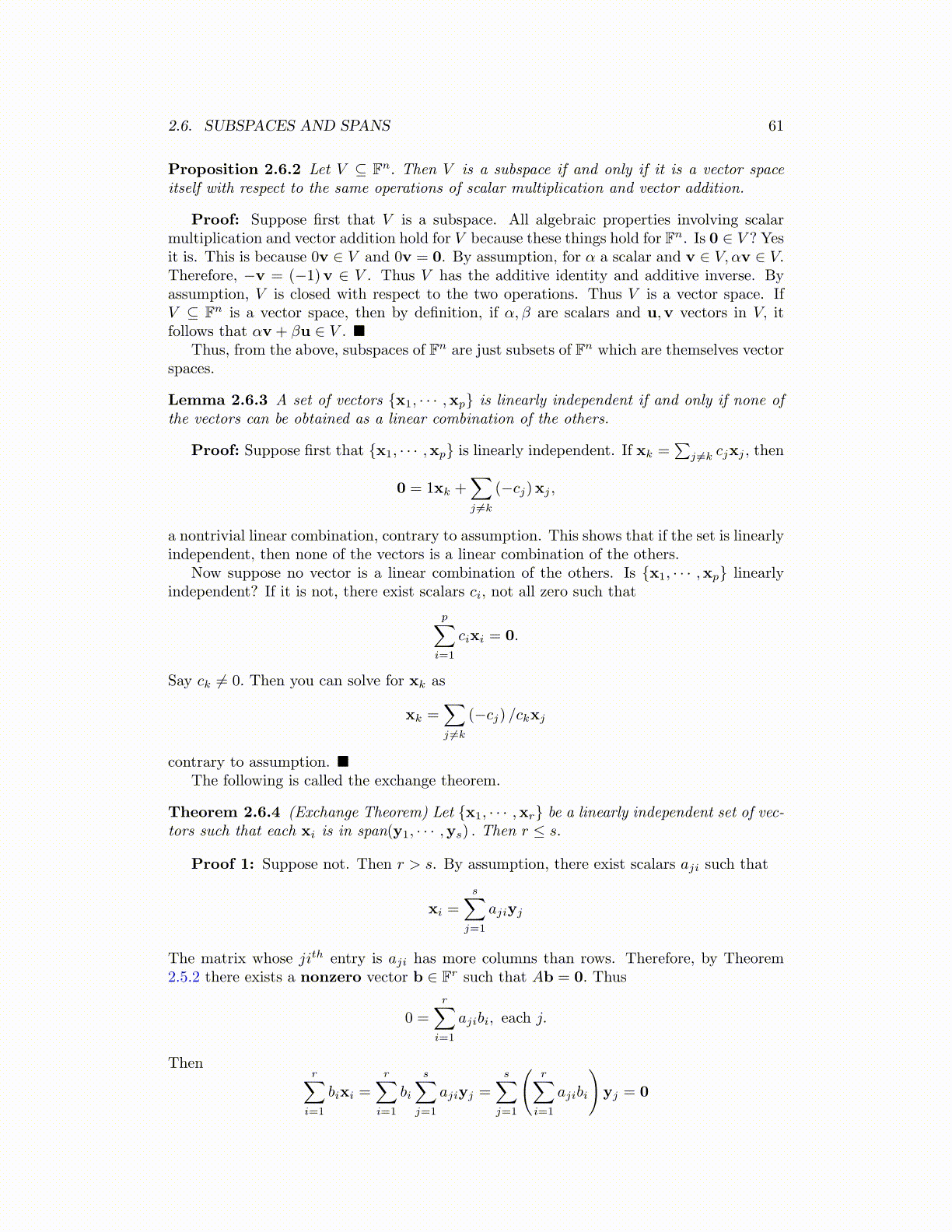
2.6. SUBSPACES AND SPANS 61
Proposition 2.6.2 Let V ⊆ Fn. Then V is a subspace if and only if it is a vector spaceitself with respect to the same operations of scalar multiplication and vector addition.
Proof: Suppose first that V is a subspace. All algebraic properties involving scalarmultiplication and vector addition hold for V because these things hold for Fn. Is 0 ∈ V ? Yesit is. This is because 0v ∈ V and 0v = 0. By assumption, for α a scalar and v ∈ V, αv ∈ V.Therefore, −v = (−1)v ∈ V . Thus V has the additive identity and additive inverse. Byassumption, V is closed with respect to the two operations. Thus V is a vector space. IfV ⊆ Fn is a vector space, then by definition, if α, β are scalars and u,v vectors in V, itfollows that αv + βu ∈ V . ■
Thus, from the above, subspaces of Fn are just subsets of Fn which are themselves vectorspaces.
Lemma 2.6.3 A set of vectors {x1, · · · ,xp} is linearly independent if and only if none ofthe vectors can be obtained as a linear combination of the others.
Proof: Suppose first that {x1, · · · ,xp} is linearly independent. If xk =∑
j ̸=k cjxj , then
0 = 1xk +∑j ̸=k
(−cj)xj ,
a nontrivial linear combination, contrary to assumption. This shows that if the set is linearlyindependent, then none of the vectors is a linear combination of the others.
Now suppose no vector is a linear combination of the others. Is {x1, · · · ,xp} linearlyindependent? If it is not, there exist scalars ci, not all zero such that
p∑i=1
cixi = 0.
Say ck ̸= 0. Then you can solve for xk as
xk =∑j ̸=k
(−cj) /ckxj
contrary to assumption. ■The following is called the exchange theorem.
Theorem 2.6.4 (Exchange Theorem) Let {x1, · · · ,xr} be a linearly independent set of vec-tors such that each xi is in span(y1, · · · ,ys) . Then r ≤ s.
Proof 1: Suppose not. Then r > s. By assumption, there exist scalars aji such that
xi =
s∑j=1
ajiyj
The matrix whose jith entry is aji has more columns than rows. Therefore, by Theorem2.5.2 there exists a nonzero vector b ∈ Fr such that Ab = 0. Thus
0 =
r∑i=1
ajibi, each j.
Thenr∑
i=1
bixi =
r∑i=1
bi
s∑j=1
ajiyj =
s∑j=1
(r∑
i=1
ajibi
)yj = 0